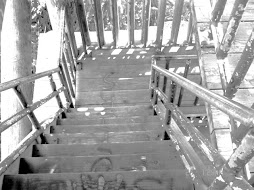As the great American political bandwagon is finally coming to a gradual temporary halt with the closure of the election season, the nation is at last finding itself able to pause and look back on the events of the past year in a more reflective tone. While the political game was on, it seemed that the distracting whirlwind of propaganda, hype and partisanism made realistic contemplation near impossible for many of us. Now that the dust seems to be settling, Americans are finally beginning to ask the long postponed question: so what? I choose to use this particular question, not only because it is the carefully chosen title of this blog, but because in my opinion, it represents the search for the deep implications and effects of the events which occupy our lives.
In the case of our now changed political environment, the question "so what?" is being asked by Americans everywhere; across all social categories, cultural lines, belief systems and political associations. The citizens of this nation know that history has been made. They know that this new America is not the America that it was a year ago. There has been a shift, political, ideological, ethical, toward something new. The inquiry that remains unanswered is exactly what direction the nation has shifted toward, and how this shift will effect the very uncertain future.
Some feel that the shift is obvious and permanent, symbolized by Obama's earth shattering election. Many engaged in this national conversation, such as journalists E. J. Dionne of The Washington Post, and John Judis of The New Republic. They believe that this year's election results strongly affirm their conjecture that the United States has confidently shifted its political center from the right to the left. In their opinions, "this year's election marked a fundamental "realignment," as the Republican base of older blue-collar and rural whites shrank to a minority," giving way to a new Democratic majority "composed of college educated professionals; working and single women; blacks, Hispanics, and Asians; and people under 30." In their view, Obama could not have been realistically elected in an America identified by a traditional, right centered leaning.
On the other hand, many by viewing the most recent exit poles have come to disagree. The poles show that 22% of registered voters identified themselves as liberals, while 34% claimed a conservative identity. The remaining 44% considered themselves moderates. According to these statistics, the numbers remained virtually the same as those observed during the 2004 election period. These less convinced citizens, including journalists Rod Dreher of Realpolitics.com and Rich Lowry of the Washington Post, feel that the true motivation for the election results was simple dissatisfacion with the republican party and President Bush, not a central political shift.
I tend to agree with journalist Steven M. Wharshawsky, a writer for the American Thinker. His conclusion is that it is simply too soon to tell. Noting the large, unignorable presence of those "wishy washy" unidentified moderates, Wharshawsky insists that there is a large number of Americans who simply do not fit in a cookie cutter partisan identity. They are caught somewhere in the middle. It would seem that apparently we are as well. I guess we will just have to wait a bit longer for that dust to settle...
This week's article discovered in the November 21, 2008 issue of The Week magazine.
